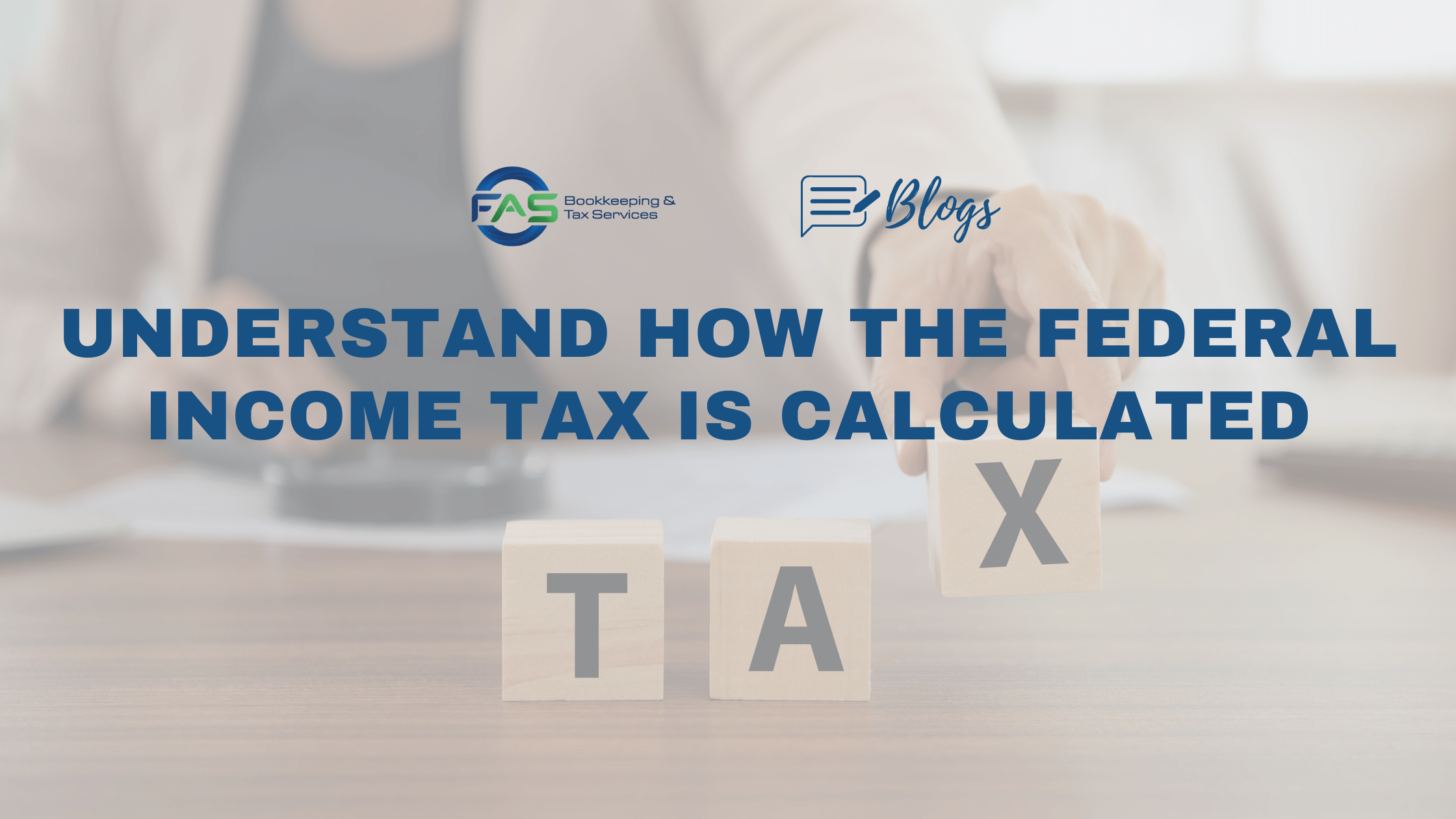Understand how the Federal Income Tax is Calculated
You might’ve been filing your income tax for several years now or will only start filing for this tax year. Either way, you might’ve asked yourself the question of how Federal Income Tax is calculated, right? Well, if you want an answer to your question, you came to the right place!
Here we will help you get a better understanding of how Federal Income Tax is calculated so you no longer have to guess in the dark while you do your Form 1040 or other applicable forms.
Whenever tax season arrives, you should keep in mind that a part of what determines your overall tax bill at the federal and state level is your income. Knowing how Federal income tax is calculated can help you understand how the IRS views your income and how they determine your taxable income.
Determining your taxable income
Here’s a step by step guide that can help you understand how Federal Income Tax is calculated:
 Step 1: You must determine your filing status
Step 1: You must determine your filing status
The first step that you need to take in order to understand how federal income tax is calculated is by determining your filing status. To do this, you must determine whether you are single, married, or have a qualifying child.
Single filers are those who have never been married and are not claimed as dependent on another person’s tax return. Single filers use the 1040 or the 1040A form.
If you are married and filing jointly with your spouse, then your filing status is “Married Filing Jointly.” If you are married but filing separately from your spouse, then your filing status is “Married Filing Separately.” If you are a head of household, then your filing status is “Head of Household,” respectively. If you have dependents, then your filing status may be “Qualifying Widow(er) with Dependent Children” or “Married Filing Separately with Dependents.”
If you’re filing status falls under Married Filing Jointly, you and your spouse are required to put together both of your incomes to determine the total taxable income. Combing your incomes also mean that you can combine deductions.
However, even if you’re married, you and your wife can still opt to file separately under the filing status Married Filing Separately. When you file separately, it means each of you adds up your income, and you pay your taxes separately. You have to divide up your deductions. Both of you can’t use the same expenses to calculate the amount of your separate deductions. Some states have property rules that require married couples who file separate returns to combine certain income and expenses owned by both spouses and then split the income and expenses equally on the returns. These states are known as community property states.
If you choose this option, you’ll need to decide whether or not to use joint return tax rates or separate return tax rates for each spouse and whether or not to file as head of household if either spouse qualifies for this status.
You’ll also have to decide if some or all of your child deductions should be taken on an individual basis or if they should be combined onto one return (even if only one of you had custody). The IRS recommends that parents take these deductions together since they would need to complete Schedules A and B together anyway if they were married filing jointly anyway.
If only one parent has custody over a child but both parents claim them as dependents, then it’s possible that both parents might get audited by the IRS.
Step 2: Declare your gross income
When it comes to calculating your Federal Income tax, the Internal Revenue Service starts out with your gross income which is the total you make from a job or business, in addition to retirement income, interest income, dividends from stocks, and money from investments.
To visualize here’s an example. Let’s say you earned the following income in 2022:
- Salary – $50,000
- Business profit from consulting work – $20,000
- Interest income – $10,000
In this scenario, your gross income for 2021 would be $80,000. However, federal income taxes are not calculated based on your gross income, it simply is the starting point.
Step 3: Determine your adjusted gross income (AGI)
Certain adjustments are applied to your gross income to determine your “adjusted gross income.” These deductions are also referred to as “above the line” because you can use them regardless of whether you itemize deductions or take the standard deduction.
In other words, you don’t have to itemize in order to claim these deductions.
In particular, if you’re self-employed, you’ll be able to deduct your business expenses from your gross income before calculating your adjusted gross income. Note that there are two different types of business expenses: one for businesses that operate through an S corporation and one for businesses that do not. There are also two different types of self-employment taxes: one for sole proprietorships and partnerships, and another for corporations.
Deductions for business expenses include things like office supplies, utilities used by the business (like electricity), depreciation on property used in the business (such as equipment), travel expenses related to the business (like gas mileage), and more.
 Step 4: Deductions and Taxable Income
Step 4: Deductions and Taxable Income
Now that you’ve determined your Adjusted Gross Income, it’s now time to calculate your taxable income after deductions.
After you are finished reporting all of your income on your Form 1040 and Schedule 1, you now have the chance to adjust your income on Schedule 1.
On Schedule 1, you can decrease your taxable income by adding up deductions such as contributions to a traditional IRA, student loan interest, and self-employed deductions. This gives you the total adjustments. AGI is calculated by subtracting the adjustments from your total income.
Your adjusted gross income (AGI) is one of the first figures on your tax return to determine how much you owe in federal taxes. You then subtract various deductions from your AGI. The final amount is your taxable income, which determines how much you owe in federal taxes. If you operate a business, you may also be eligible for a deduction on qualified business income. Now that you have your taxable income, use the income tax bracket of the given tax year.
2022 income tax brackets
Single Filers
| Tax rate | Taxable income bracket | Tax owed |
| 10% | $0 to $10,275 | 10% of taxable income |
| 12% | $10,276 to $41,775 | $1,027.50 plus 12% of the amount over $10,275 |
| 22% | $41,776 to $89,075 | $4,807.50 plus 22% of the amount over $41,775 |
| 24% | $89,076 to $170,050 | $15,213.50 plus 24% of the amount over $89,075 |
| 32% | $170,051 to $215,950 | $34,647.50 plus 32% of the amount over $170,050 |
| 35% | $215,951 to $539,900 | $49,335.50 plus 35% of the amount over $215,950 |
| 37% | $539,901 or more | $162,718 plus 37% of the amount over $539,900 |
Learn more about income tax brackets here.
Once you know which income tax bracket you fall into, you can now then begin applying credits that can lower your tax liability, such as the child tax credit, earned income tax credit, and many others.
If you are married, run a few tax calculations to see how much less you will owe if you file as a “married couple filing jointly” rather than as two individuals filing separately.
Your total tax bill
Basically, this is how the federal income tax is calculated. Simply follow the steps provided above and you’ll be on your way to the IRS without so much as a hiccup. However, if you feel like this is too much for you, don’t worry. Many people feel the same way. That’s why they choose FAS Bookkeeping and Tax Services to do their taxes for them! Our experienced Enrolled Agent makes sure that no stone is left unturned when it comes to the credits and deductions applicable to your unique tax situation!





